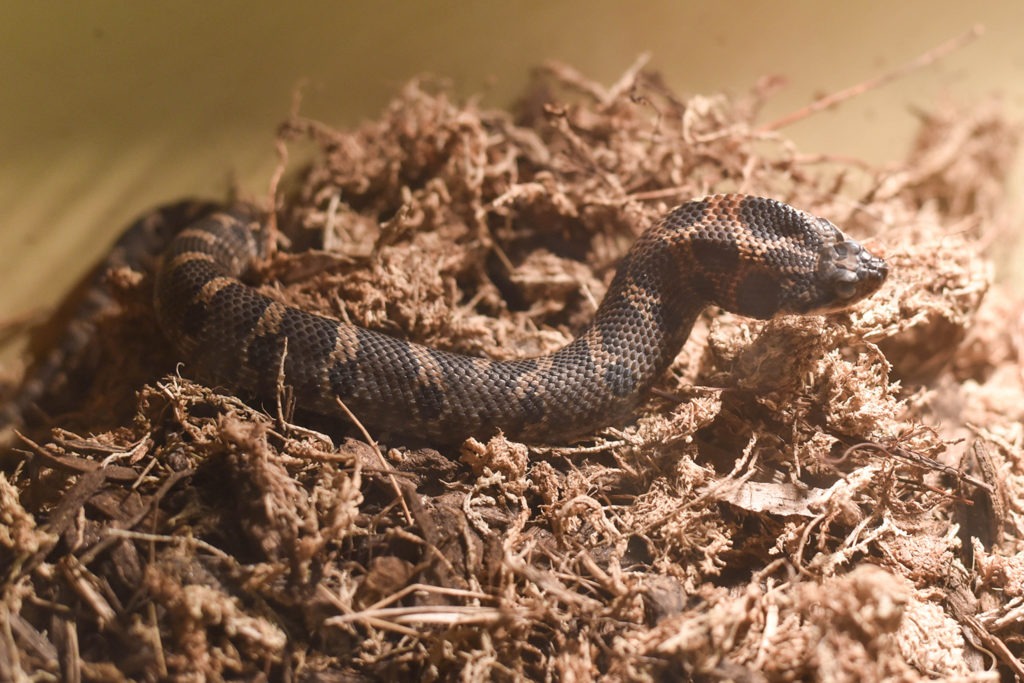Overview
“Where I live”
Eastern hognose snakes are native to eastern North America from southern Canada, the Great Lakes region, and New England south to Florida. They prefer woodlands with sandy soil, fields, farmland, and coastal areas.
At the Zoo, you can see hognose snakes inside the Giant Tree in the Maryland Wilderness.
“How I live there”
Hognose snakes are active during the day. They are solitary animals that forage and bask in the open but may restrict activity to early and late in the day when it is hot outside. They usually burrow in loose soil overnight.
They use their upturned snouts to root around in the dirt and hopefully stir up prey. They are toad specialists but will also eat other types of prey such as other amphibians, reptiles, birds, small mammals, and invertebrates. Toads inflate themselves as a defensive measure and secrete toxins from their skin that disturb most predators but hognose snakes are undeterred. They have wide mouths to accommodate even inflated toads and they are immune to toad toxins.
During the winter, hognose snakes brumate in underground burrows. They either excavate their own burrows or take over abandoned fox, skunk, or woodchuck dens.
“Making my mark”
Eastern hognose snakes are easily distinguished from other snakes by their slightly upturned snouts. They also behave in such a unique way when threatened that they are rarely confused with other snakes.
Raising Young
Hognose snakes mate soon after emerging from brumation in late spring. Females lay their eggs in early summer and, after incubating for a month or two, the eggs hatch in late summer. Females lay clutches of 15 to 25 eggs on average in sandy depressions under rocks or logs.
“What eats me”
Birds of prey and some other snakes may eat eastern hognose snakes but few other predators have been observed. Many would-be predators, fooled by the hognose snake’s self-defense tactics, choose to leave it alone.
Hognose snakes are nicknamed “puff adders” because when threatened, they puff out the skin around their necks and raise their heads off the ground like cobras. They may also hiss and lunge at their attackers. If intimidation fails, these snakes resort to trickery: they flip over and play dead!
Conservation
Eastern hognose snakes are classified as a species of least concern by the IUCN, the world’s leading conservation organization. Their population is considered stable overall, although local populations will fluctuate in response to toad availability. Hognose snakes are frequently mistaken for rattlesnakes and are persecuted as a result, but upon close inspection it is obvious that hognose snakes lack rattles and the facial pits that all rattlesnakes have.
Taxonomy
- Kingdom: Animalia
- Phylum: Chordata
- Subphylum: Vertebrata
- Class: Reptila
- Order: Squamata
- Family: Dipsadidae
- Genera: Heterodon
- Species: platirhinos


